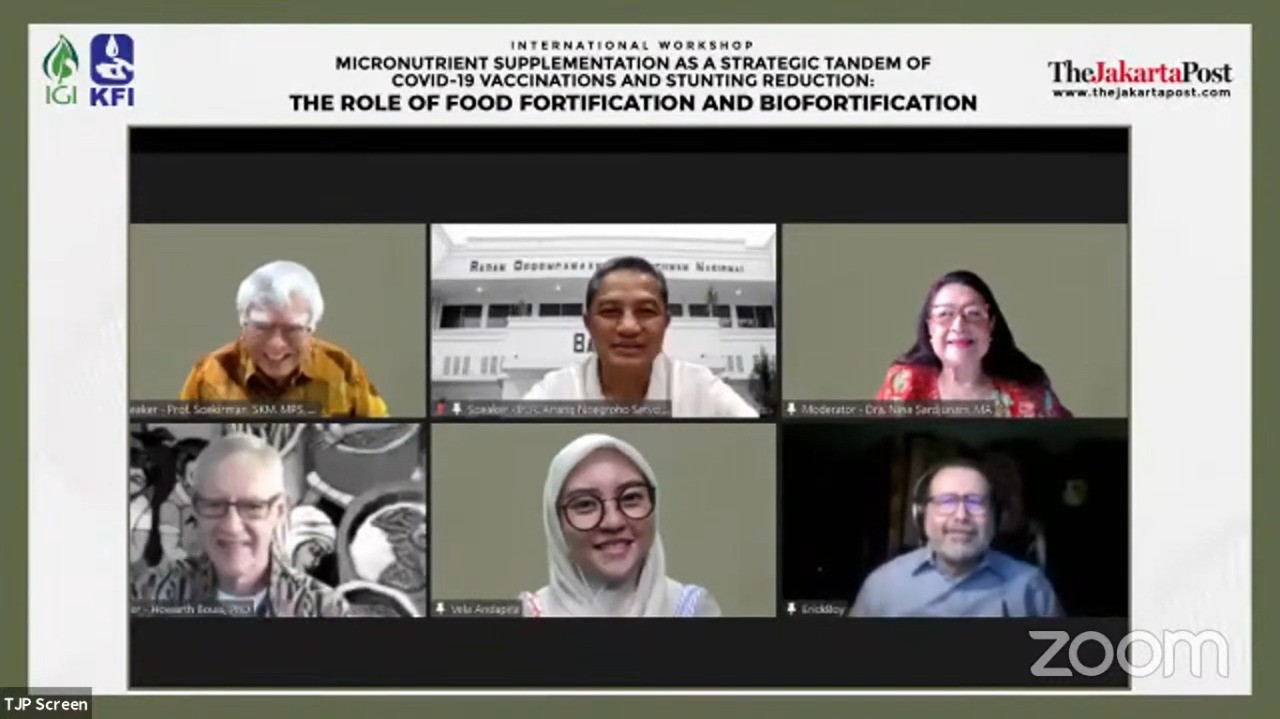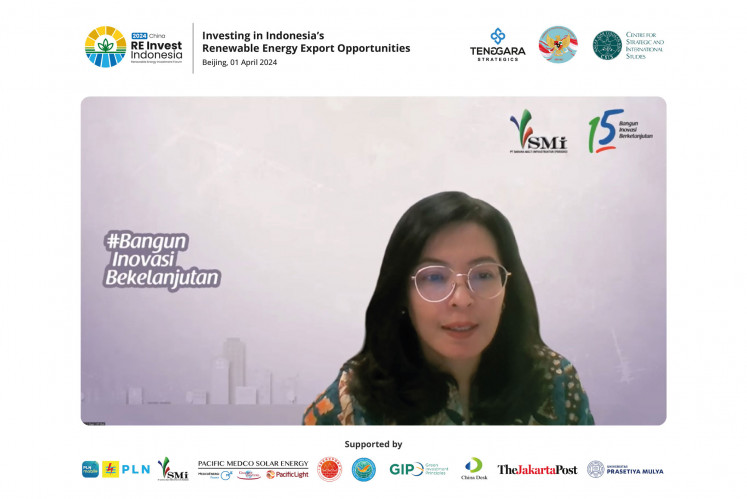Micronutrients can support global COVID-19 vaccination efforts
One year into the COVID-19 pandemic, countries around the world are in the middle of their vaccination drives in addition to boosting their health systems.
Change Size

Josa Lukman
One year into the COVID-19 pandemic, countries around the world are in the middle of their vaccination drives in addition to boosting their health systems.
While much of the focus has been on the effectiveness of the vaccines, micronutrients can play a role in supporting the global effort.
In a workshop jointly held by the Indonesian Foundation for the Development of Food Fortification (KFI) and the Indonesian Institute of Nutrition (IGI), a panel of experts, including three World Food Prize Laureates, discussed the role of micronutrients in what can be considered the largest health crisis of the era.
David Nabarro, a special envoy of the World Health Organization Director General on COVID-19 and an advisory committee member of the UN Food System Summit, spoke of the importance of Sustainable Development Goals set by the United Nations in 2015, one of which is making sure that countries’ food systems work the best they can.
Nabarro, the holder of the 2018 World Food Prize Laurate, said the efforts in examining food systems had become more urgent, as COVID-19 had revealed their flaws.
“It shows us how vulnerabilities, particularly to diseases, as well as to the consequences of measures to contain the disease hit poor people the hardest,” he said.
Nabarro acknowledged that food systems have improved massively in recent years, improving access to food as well as stocks, noting that it would be enough to feed everybody and still have some left over. However, he said the real question is: “Why don’t some people and areas do well?”
That question, he continued, will be addressed in the Food Systems Summit organized by the secretary-general of the United Nations later in September, in which nutrition will be the main focus, particularly in a child’s first 1,000 days of life.
Howarth Bouis, the founder of biofortified food crop advocacy group HarvestPlus and the holder of the 2016 World Food Prize Laureate, proposed that future activities on food systems could be divided into two categories: food staples and non-food staples.
“The first is food staples, in which we must increase the density of minerals and vitamins, as consumers already eat maximum amounts of food staples,” he explained, noting that efforts could come in the form of biofortification, as well as a selection of fertilizers and sprays.
As for non-staple foods, the quantity consumed must simply be larger. These include food items like milk, eggs, small fish, and a number of leafy vegetables. However, he also noted that this can only be made possible if incomes are increased or food prices are lowered.
“Both strategies must be pursued simultaneously,” Bouis stressed.
Concluding the workshop, economist and Global Alliance for Improved Nutrition (GAIN) executive director Lawrence Haddad reflected on the one-year anniversary of COVID-19, noting that the pandemic had also disrupted food systems around the world, along with overwhelming health services and causing widespread losses in income.
“These three factors have been absolutely devastating on malnutrition. Globally, hunger has been on the rise before COVID, and now it will rise even faster,” he said, adding that some 135 million people were added to the existing 600 million who were experiencing hunger.
Haddad also estimated that the number of wasted children, those that are too thin for their height, will increase by 9 million in the next two years, wiping away 10 years of progress.
In addition, stunting numbers are estimated to rise by 3 million globally, while maternal anemia will rise by 2 million. All of that would be followed by an estimated US$30 billion of lost productivity.









